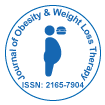Unsere Gruppe organisiert über 3000 globale Konferenzreihen Jährliche Veranstaltungen in den USA, Europa und anderen Ländern. Asien mit Unterstützung von 1000 weiteren wissenschaftlichen Gesellschaften und veröffentlicht über 700 Open Access Zeitschriften, die über 50.000 bedeutende Persönlichkeiten und renommierte Wissenschaftler als Redaktionsmitglieder enthalten.
Open-Access-Zeitschriften gewinnen mehr Leser und Zitierungen
700 Zeitschriften und 15.000.000 Leser Jede Zeitschrift erhält mehr als 25.000 Leser
Indiziert in
- Index Copernicus
- Google Scholar
- Öffnen Sie das J-Tor
- Genamics JournalSeek
- Zentrum für Landwirtschaft und Biowissenschaften International (CABI)
- RefSeek
- Hamdard-Universität
- EBSCO AZ
- OCLC – WorldCat
- SWB Online-Katalog
- CABI-Volltext
- Direkte Kabine
- Publons
- Genfer Stiftung für medizinische Ausbildung und Forschung
- Euro-Pub
- Universität Bristol
- veröffentlicht
- ICMJE
Nützliche Links
Open-Access-Zeitschriften
Teile diese Seite
Abstrakt
Exploring the Relationship between the Fast Food Environment and Obesity Rates in the US vs. Abroad: A Systematic Review
Antonio G*and Mohansrinivasa C
Obesity remains one of the greatest public health concerns in our modern-day society, necessitating an understanding of the underlying contributing factors. This systematic review examines the existing literature to better understand the relationship between the fast food environment and obesity rates within the United States (US) compared to other countries throughout the world. To be included in our review, studies must have been peer-reviewed, published in English, and had to include some measure of analysis of the fast food environment and rates of obesity. Based on the results of our review (n=46 studies), the findings were largely similar between US and non-US studies; in both cases, there were inconsistent associations between the fast food environment and rates of obesity/overweight. However, in terms of socioeconomic status (SES), our findings were consistent across both US and non-US studies; lower SES was associated with unfavourable fast food environments, higher concentrations of fast food restaurants, higher consumption of junk food, and higher obesity rates. Based on the results of our review, we conclude that more longitudinal research must be performed with consistent methodology in order to more clearly understand the role of the fast food environment in the development of obesity.
Zeitschriften nach Themen
- Allgemeine Wissenschaft
- Biochemie
- Chemie
- Genetik und Molekularbiologie
- Geologie und Geowissenschaften
- Immunologie und Mikrobiologie
- Klinische Wissenschaften
- Krankenpflege und Gesundheitsfürsorge
- Landwirtschaft und Aquakultur
- Lebensmittel & Ernährung
- Maschinenbau
- Materialwissenschaften
- Medizinische Wissenschaften
- Pharmazeutische Wissenschaften
- Physik
- Sozial- und Politikwissenschaften
- Umweltwissenschaften
- Veterinärwissenschaften
Klinische und medizinische Fachzeitschriften
- Anästhesiologie
- Augenheilkunde
- Betrieb
- Dermatologie
- Diabetes und Endokrinologie
- Gastroenterologie
- Genetik
- Gesundheitspflege
- Immunologie
- Infektionskrankheiten
- Kardiologie
- Klinische Forschung
- Medizin
- Mikrobiologie
- Molekularbiologie
- Neurologie
- Onkologie
- Pädiatrie
- Pathologie
- Pflege
- Toxikologie
- Zahnheilkunde

 English
English  Spanish
Spanish  Chinese
Chinese  Russian
Russian  French
French  Japanese
Japanese  Portuguese
Portuguese  Hindi
Hindi